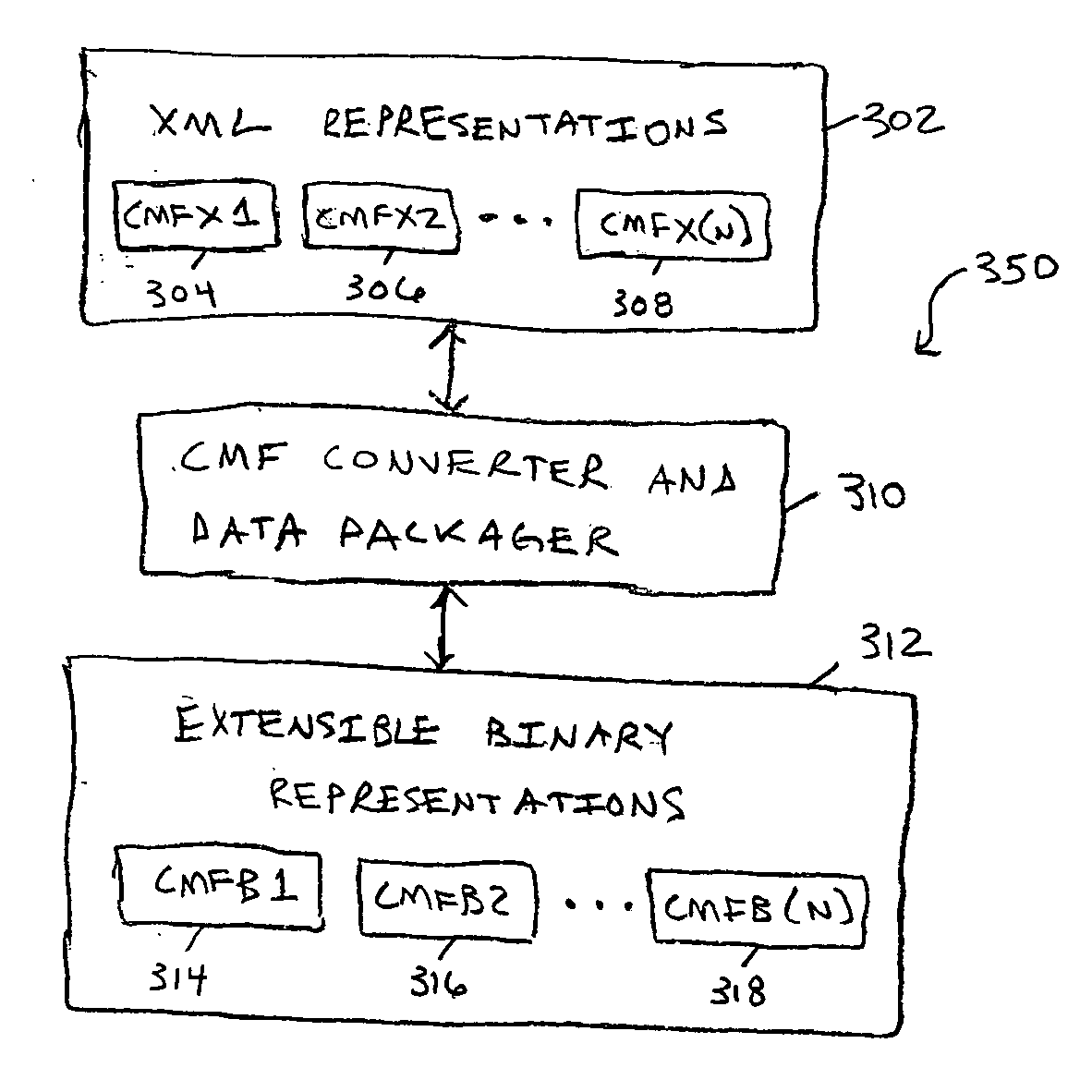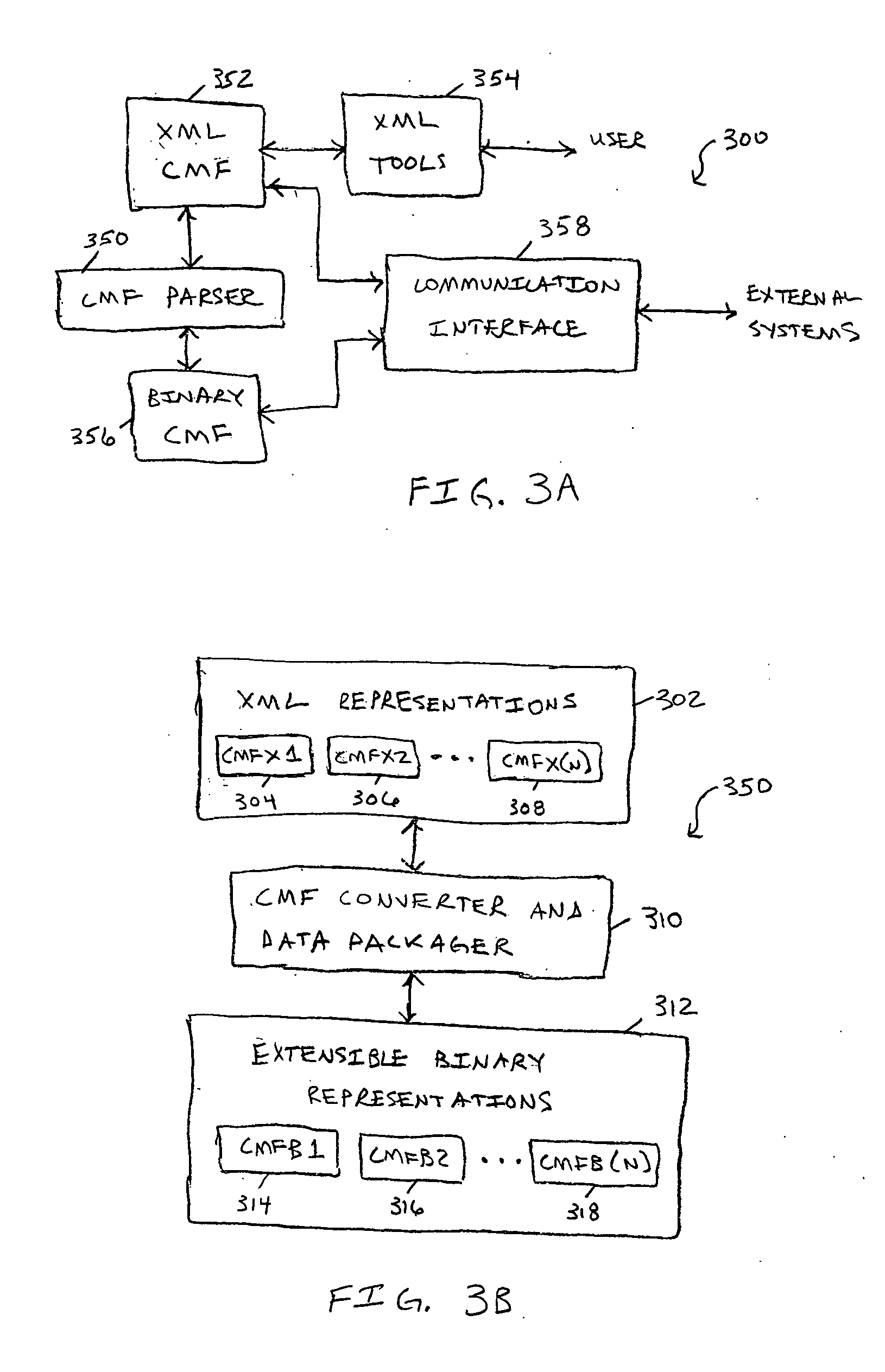Extensible binary mark-up language for efficient XML-based data communications and related systems and methods
a xml-based data and mark-up language technology, applied in the field of data transmission, can solve the problems of inefficiency of communicating xml-formatted data, inability to meet the requirements and other low or narrow bandwidth systems, and achieve the effect of improving the efficiencies of xml-based data communication
- Summary
- Abstract
- Description
- Claims
- Application Information
AI Technical Summary
Benefits of technology
Problems solved by technology
Method used
Image
Examples
embodiment 200
[0018]FIG. 2 is a block diagram for an embodiment 200 according to the present invention where CMF parsers 202 and 204 are utilized for conversion between XML-based ASCII encoded data to binary CMF data for communications through network 102. In particular, unlike FIG. 1A (prior art) where ASCII data is packaged and transmitted across network 102, CMF parser 202 converts the XML formatted document (CMF-X) from ASCII data into binary CMF (CMF-B) data for transmission through network 102, as represented by line 206. This CMF-B data, which is described in further detail in the APPENDIX attached below, is extensible and preferable infinitely extensible. Once passed through network 102, the CMF-B data is received by CMF parser 204, as represented by line 208. CMF parser 204 THEN converts the CMF-B data back into an XML recognizable ASCII format (CMF-X). As described below, the CMF-B data coding of the present invention allows for reduced bandwidth requirements by reducing the number of b...
embodiment 400
[0021]FIG. 4 is a block diagram for an extensible binary data format 400 according to the present invention. Although this data format is described in more detail in the APPENDIX below, the basic idea for an extensible binary data format is presented in FIG. 4. In particular, the binary data 404 is extensible, and preferably infinitely extensible, with the use of termination indicator bits 406. In the embodiment depicted, data bytes 420A, 420B . . . 420C are each 8-bit data bytes, as represented by element 402. More particularly, byte 420A includes a single termination indicator bit 414, as a most-significant-bit (MSB), and seven data bits 412. Similarly, byte 420B includes a single termination indicator bit 416, as its MSB, and seven data bits 410. And byte 420C includes a single termination indicator bit 418, as its MSB, and seven data bits 408. The termination indicator bits 406 for each data byte of the extensible binary data 404 indicates whether or not another byte is needed t...
PUM
 Login to View More
Login to View More Abstract
Description
Claims
Application Information
 Login to View More
Login to View More - R&D
- Intellectual Property
- Life Sciences
- Materials
- Tech Scout
- Unparalleled Data Quality
- Higher Quality Content
- 60% Fewer Hallucinations
Browse by: Latest US Patents, China's latest patents, Technical Efficacy Thesaurus, Application Domain, Technology Topic, Popular Technical Reports.
© 2025 PatSnap. All rights reserved.Legal|Privacy policy|Modern Slavery Act Transparency Statement|Sitemap|About US| Contact US: help@patsnap.com



